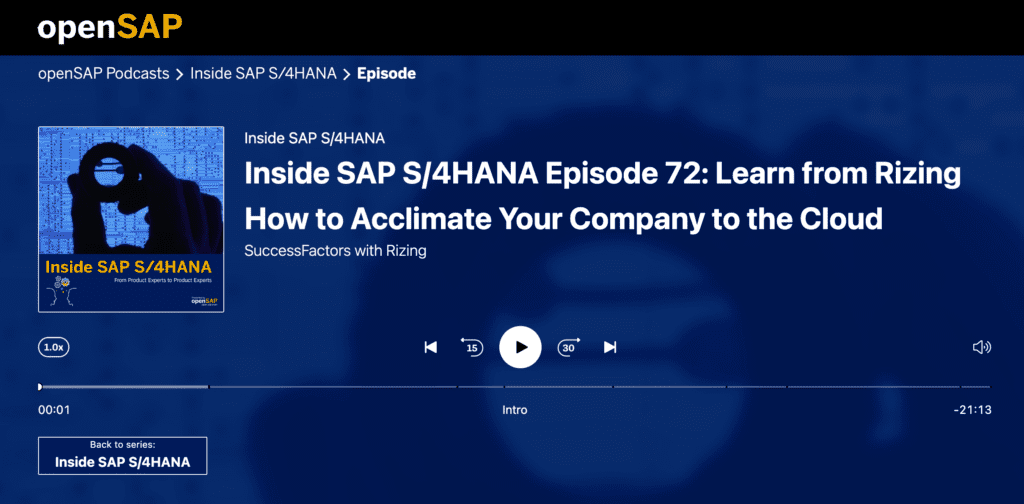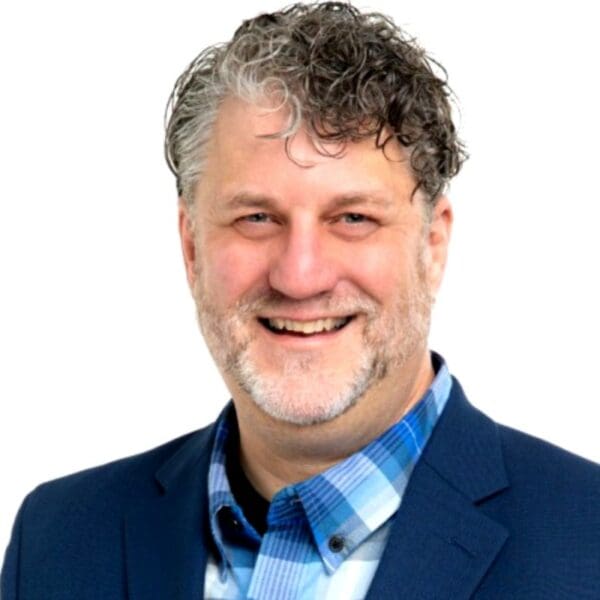Research giant Gartner states, “More Than Half of Enterprise IT Spending in Key Market Segments Will Shift to the Cloud by 2025.”
If you are responsible for some of that spend on cloud-based software, you’ll want to make sure your projects are successful.
A recent SAP® podcast featured Rizing’s Jodi Hayes-Roth, CEO of Human Capital Management, and Len Harms, Chief Experience Officer, who shared lessons learned from Rizing’s own adoption of SAP S/4HANA®.
Eating Your Own Dog Food
Ever heard the phrase “eating your own dog food?”
You can thank Clement L. Hirsch for that.
Hirsch was the creator and President of Kal Kan dog food. The company got its start by providing food for WWII service animals.
Hirsch was so insistent on the quality of his product that, once a year, while standing at the podium of the annual shareholder’s meeting, he would open a can and eat it.
Rizing’s Diet

Rizing’s Jodi Hayes-Roth, CEO of Human Capital Management, and Len Harms, Chief Experience Officer, recently appeared on an episode of the OpenSAP Podcast. They shared the following “dog-fooding lessons” learned from Rizing’s own adoption of SAP S/4HANA®.
SuccessFactors First
Hayes-Roth and Harms felt that SAP SuccessFactors was a good place for companies to start with cloud software adoption.
“We started our whole journey of implementing SAP cloud software with SuccessFactors, specifically Employee Central,” says Len Harms. “It made sense because SAP was just starting to develop cloud solutions for a company our size. Then as we moved forward, it was based on SAP solutions becoming much more purpose-fit for the size of our company.”
“It’s a good starting point because HR gives every employee a taste of what it’s like to work in the cloud,” says Hayes-Roth.
Standardize Your Data
The Rizing duo also agreed on the importance of standardizing data formats.
“Moving to the cloud involves getting your data cleansed and standardized,” says Hayes-Roth. “HR is a controlled area where you can start that standardization.”
“Postal codes are a good example,” adds Harms. “In the US, we have a standard five-digit zip code, then occasionally have a dash and four more digits. You have to decide if you will allow five or ten digits, then enforce that. Good master data depends on formalizing rules.”
Start at the End
“Start with the end in mind,” says Hayes-Roth, “So that you’re thinking about it holistically and that the entire data model will work together.”
Hire to Retire is the Bridge
Hayes-Roth agreed that Hire to Retire was the best bridge between SuccessFactors and S/4HANA.
“That’s where I would start,” she said. “That’s the base process from an HR standpoint, and then you can add the other modules in a phased approach.”
“From there, the next step would be Finance,” added Harms. “Finance is fundamental, and with the S4 solution, it’s the most logical choice.”
Organizational Readiness is Critical
Harms and Hayes-Roth reminded listeners that software implementation projects could hit snags due more to human factors than technical ones.
“Change readiness often gets forgotten,” says Hayes-Roth. “You must address it upfront and prepare people for the upcoming changes.”
“When we did our HR implementation, it was more easily embraced because we were able to update data once in SuccessFactors that used take edits to five different spreadsheets,” Harms says. “In finance, it was tougher because the changes were more dramatic. We didn’t fully appreciate the impact it would have on our people. That was one of the things that we could have done better.”
Full show
Listen to the complete podcast episode.
Need Help?
If you need help implementing SAP on the cloud, feel free to contact us. We can create a roadmap to ensure your project is successful.
Oh, and?
Dog food-eating Clement L. Hirsch?
Eventually made millions by selling out to Mars.
Then started selling chili.
Makes you wonder.


